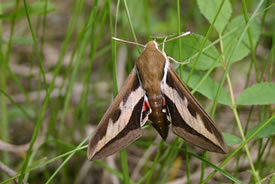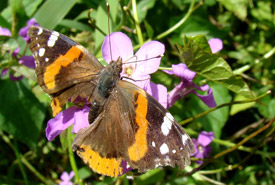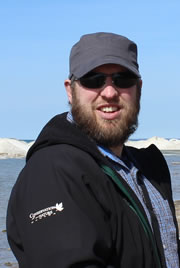Moths and butterflies: What we're doing to help these little-known pollinators

Sphinx moth (Photo © Manitoba Museum)
Bees are well known for their ability to pollinate flowers but there are other pollinators out there, including moths and butterflies.
Moths pollinate flowers both during the day and at night.
This summer, Nature Conservancy (NCC) staff will be working with experts from Canadian National Collection of Insects, Arachnids & Nematodes to complete a moth survey on several NCC properties from May to September this year.
Last year we sampled moths during one period in June for one NCC property in Central Ontario. Findings from this survey showed that the Rice Lake Plains Natural Area has the potential to be an important core area for provincially (and nationally) significant moths.

Red admiral butterfly (Photo by NCC)
Butterflies are another key pollinator. NCC staff document butterflies through targeted surveys and through annual butterfly counts.
Butterfly counts are done across the province on a scheduled date each year. Over the course of one day, participants divide a larger area in sections and each team searches throughout the day for butterflies within their area. The protocol follows the North American Butterfly Association Count procedures. These counts help to establish butterfly population sizes, trends and the locations of butterflies.
The counts also provide attendees a chance to socialize, have fun and learn about these fascinating species. It also gives the opportunity to visit unique habitats and lands.
Want to learn more?
Here are a few of my favourite links to help you learn more about pollinators, their identification and what they can do to help:
Xerces Society
North American Pollinator Protection Campaign
Pollination Canada
Other identification guides (detailed and more general) and pollinator information:
The Bee Genera of Eastern Canada (for those interested in detailed identification)
Leafcutter and Mason Bees of Canada and Alaska
A Guide to Toronto Pollinators
Attracting bees to your garden
Some identification guides from the U.S.
Spring Wild Bees of Wisconsin Online Identification Guide
A Pictorial Guide to Some Common Bees of the New York City Metropolitan Area
Ohio Bee identification Guide
Bee Observer Cards from the Great Sunflower Project and Encyclopedia of Life


